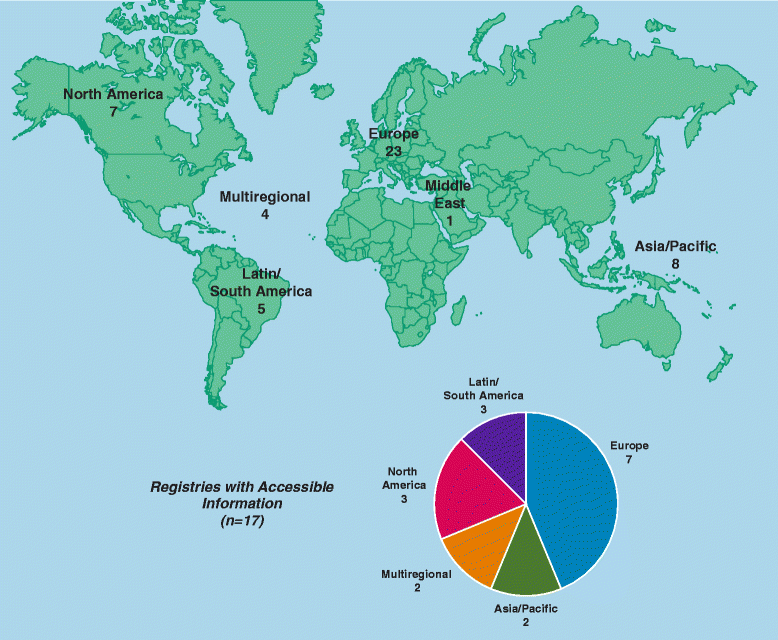A global overview of renal registries: a systematic review
- PMID: 25886028
- PMCID: PMC4377012
- DOI: 10.1186/s12882-015-0028-2
A global overview of renal registries: a systematic review
Abstract
Background: Patient registries have great potential for providing data that describe disease burden, treatments, and outcomes; which can be used to improve patient care. Many renal registries exist, but a central repository of their scope, quality, and accessibility is lacking. The objective of this study was to identify and assess worldwide renal registries reporting on renal replacement therapy and compile a list of those most suitable for use by a broad range of researchers.
Methods: Renal registries were identified through a systematic literature review and internet research. Inclusion criteria included information on dialysis use (yes/no), patient counts ≥300, and evidence of activity between June 2007 and June 2012. Public availability of information on dialysis modality, outcomes, and patient characteristics as well as accessibility of patient-level data for external research were evaluated.
Results: Of 144 identified renal registries, 48 met inclusion criteria, 23 of which were from Europe. Public accessibility to annual reports, publications, or basic data was good for 17 registries and moderate for 22. Patient-level data were available to external researchers either directly or through application and review (which may include usage fees) for 13 of the 48 registries, and were inaccessible or accessibility was unknown for 25.
Conclusions: The lack of available data, particularly in emerging economies, leaves information gaps about health care and outcomes for patients with renal disease. Effective multistakeholder collaborations could help to develop renal registries where they are absent, or enhance data collection and dissemination for currently existing registries to improve patient care.
Figures


References
-
- Gliklich RE, Dreyer NA, editors. Registries for evaluating patient outcomes: a user’s guide. 2. Rockville, MD: Agency for Healthcare Research and Quality; 2010. - PubMed
-
- LaBresh KA, Gliklich R, Liljestrand J, Peto R, Ellrodt AG. Using “get with the guidelines” to improve cardiovascular secondary prevention. Jt Comm J Qual Saf. 2003;29(10):539–50. - PubMed
-
- US Renal Data System. In: 2013 USRDS Annual Data Report, Volume 2. Atlas of End-Stage Renal Disease. 2013. http://www.usrds.org/2013/pdf/v2_00_intro_13.pdf. Accessed 22 September 2014.
Publication types
MeSH terms
LinkOut - more resources
Full Text Sources
Other Literature Sources
Medical
Miscellaneous

